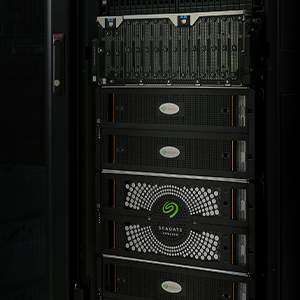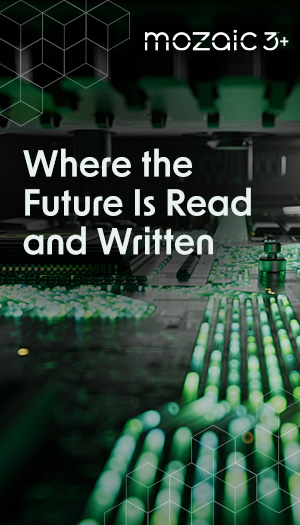Companies have always looked to existing data to try to predict what might happen down the road. The problem was that even with business intelligence tools, it was hard to account for all the data points and even harder to sift through patterns fast enough to make a quick pivot.
Now, artificial intelligence (AI) is making it possible to gather, process, and ultimately make sense of massive amounts of data. Predictive AI shortens the time to uncover insights by combining historical data and advanced machine learning (ML) algorithms. The result is a move from mostly reactive operations to a proactive approach.
However, the true potential of predictive AI comes with a critical challenge: managing its workload complexity. Organizations need a robust infrastructure—especially storage solutions—to meet its demands.
Let’s explore what makes predictive AI so integral to modern businesses, why it’s different from other AI types, and what solutions can help companies deploy it efficiently.
What is predictive AI?
Predictive AI uses advanced statistical models and ML algorithms to analyze historical data and forecast future outcomes. This technology excels at identifying patterns, correlations, and trends that would be impossible for humans to discern at scale. Instead of waiting weeks or months to arrive at a conclusion, predictive AI makes it possible to make accurate predictions quickly—within days or sometimes near real-time.
For example, a telephone company monitoring miles of cable crossing over multiple types of terrain in numerous weather patterns might have waited in the past for something to break before conducting repairs and maintenance at the site. Now, predictive AI can analyze sensor data, past weather patterns, and expected failure rates to forecast equipment failures ahead of time. The telco can redirect resources to sites for maintenance before failure and plan that maintenance for the least obtrusive time.
How predictive AI works—from data collection to insights.
Predictive AI operates through a multi-step process that transforms raw data into actionable predictions:
- Data collection. Information is gathered from diverse sources such as sensors, databases, and real-time streams, comprising both structured and unstructured data.
- Data preprocessing. The collected data is cleaned (removing incorrect, duplicate, or incomplete data), normalized or reorganized to make it easier to work with, and formatted to remove inconsistencies. This step ensures models receive only high-quality inputs.
- Model training. ML algorithms analyze preprocessed data to identify patterns and relationships. The models are iteratively refined to improve their accuracy and reliability.
- Prediction generation. Once trained, the models generate predictions, offering insights that help businesses make informed decisions.
Model training requires a lot of data, so efficient AI storage plays a crucial role throughout this process. Seagate Mozaic 3+™ technology provides the high capacity and fast data access necessary to handle such extensive datasets. It allows businesses to store enough data—and deliver it in a timely way—to deploy these complex models.
Predictive AI use cases and their storage demands.
Much like our telco example above, predictive AI is transforming industries by solving real-world challenges. Here are some examples:
Healthcare forecasting, scheduling, and managing.
Predictive AI helps forecast patient needs, optimize treatment schedules, and manage medical resources. The ability to store and access vast amounts of historical patient data, imaging, and research findings promotes model accuracy and effectiveness. Healthcare needs scalable storage solutions for handling the exponential growth of healthcare data.
Finance assessing, detecting, and investing.
Financial institutions use predictive AI for risk assessment, fraud detection, and investment strategies. By processing large volumes of transactional and market data, these models help mitigate risks and improve decision-making. Finance requires high-capacity storage to support the real-time demands of financial analytics.
Retail anticipating, optimizing, and personalizing.
Predictive AI enables businesses to anticipate customer behavior, optimize inventory, and personalize marketing campaigns. Retailers rely on extensive datasets from sales histories, customer interactions, and market trends. AI-optimized storage solutions ensure efficient data processing and quick insights.
Transportation routing, predicting, and improving.
Advanced applications of predictive AI include route optimization, predictive maintenance, and improving logistics. Massive datasets from sensors, GPS, and vehicle performance require reliable storage infrastructure. These companies need unmatched storage density and performance because managing and processing vast amounts of real-time data efficiently is critical to improve operations, minimize downtime, and support timely decision-making.
In each case, Seagate Mozaic 3+ offers scalable, energy-efficient storage that can grow and change with the company’s needs, but it also serves an even greater purpose—trust.
Trustworthy AI relies on scalable, efficient storage infrastructure, such as data lakes and object stores, that underpin the entire AI data loop. Trustworthy AI relies on five critical components: transparency, data lineage, explainability, accountability, and security.
Seagate storage solutions support transparency by providing clear data records throughout the AI lifecycle. These infrastructures enable organizations to trace the origin and usage of datasets, ensuring accountability and regulatory compliance.
By supporting AI checkpointing and ensuring data integrity, Seagate technologies also enable explainability and security, allowing businesses to build AI systems that are efficient and transparent. This combination of scalability, performance, and trustworthiness makes Seagate Mozaic 3+ an indispensable storage partner for AI innovation.
Generative AI vs. predictive AI.
A lot of conversations are happening around the topic of AI, but much of what the public knows is related to generative AI. Where predictive AI focuses on analyzing historical data to forecast future outcomes, generative AI creates new content—such as text, images, or audio—based on learned patterns from existing data.
- Examples. Predictive AI powers use cases like customer demand forecasting and risk assessment, whereas generative AI drives innovations like ChatGPT for text generation or DALL-E for image creation.
- Storage demands. Predictive AI often requires larger datasets for training and testing, necessitating high-capacity and high-performance storage solutions. Generative AI demands storage optimized for rapid data access to support real-time generation.
Seagate Mozaic 3+ technology supports the extensive storage needs of predictive AI, ensuring scalability and reliability, while solid-state drive (SSD) solutions cater to the fast access requirements of generative AI. Together, these technologies make it possible for organizations to use both AI approaches.
Benefits of predictive AI.
Predictive AI delivers significant business value by enabling smarter decision-making and greater operational efficiency. Its key benefits include:
- Improved forecasting. With predictive AI, companies can anticipate market trends, customer behavior, and operational risks, leading to better planning and decision-making.
- Cost efficiency. Predictive AI helps businesses reduce costs and allocate resources more effectively by identifying inefficiencies and predicting maintenance needs.
- Enhanced customer experiences. Leveraging predictive analytics allows businesses to personalize customer interactions, optimize product offerings, and improve satisfaction.
- Operational agility. Predictive AI enables organizations to respond quickly to changes in demand, supply chain disruptions, or emerging opportunities.
In each scenario, companies are shifting from a purely reactive approach—such as taking action when something breaks or jumping on a trend after it reaches peak popularity—to a proactive one. They’re solving problems before downtime happens or coming out ahead of trends.
Challenges and ethical considerations of predictive AI.
Using AI technology that requires so much data does come with a certain set of challenges, but there’s good news. There are best practices that can mitigate obstacles or even eliminate them.
- Data privacy and security. Any dataset big enough to power predictive AI will likely contain sensitive information. Robust storage solutions, such as Seagate enterprise drives, keep data secure throughout the AI lifecycle, fostering trust in AI systems.
- Algorithmic bias and fairness. ML models can inadvertently learn and propagate hidden biases in training data. Seagate’s storage infrastructure supports data lineage, allowing organizations to track and address biases effectively.
- Transparency and accountability. AI systems must be understandable and auditable. With Seagate storage solutions, organizations maintain detailed data usage records and decision points, promoting accountability and regulatory compliance.
- Regulation and policy compliance. The evolving landscape of AI regulations demands systems adhere to legal and ethical standards. Seagate scalable storage supports the documentation and checkpointing necessary for compliance, providing organizations with the tools to meet stringent requirements.
Powering predictive AI with Seagate Mozaic 3+ for data-driven insights.
Predictive AI workflows are data-intensive, requiring storage systems that balance capacity, performance, and efficiency. Seagate Mozaic 3+ is a purpose-built storage solution designed to meet these demands by offering:
- High-capacity storage. With up to 3TB per platter, Exos® Mozaic 3+ provides the density needed to handle massive datasets efficiently. This minimizes the physical footprint of data centers and supports large-scale AI training and inference tasks.
- Scalable infrastructure. AI workloads often grow as data volumes increase. Mozaic 3+ is designed for scalability, allowing businesses to expand storage capacity without significant infrastructure changes.
- Performance optimization. Fast data access is critical for AI workflows. Seagate storage solutions deliver high performance, ensuring data is readily available for real-time processing and analysis.
- Energy efficiency. Sustainability is increasingly important for data centers. Mozaic 3+ incorporates energy-saving technologies that reduce operational costs and environmental impact.
Seagate also supports the broader AI lifecycle through a combination of hard drives and SSDs, addressing the varied storage requirements across data ingestion, training, inference, and archiving. This versatility forms comprehensive AI data solutions that organizations can use to maintain the continuous data flow needed for predictive AI.
Implement predictive AI with the right storage infrastructure.
Predictive AI is transforming industries with its ability to support data-driven decision-making and forecasting. However, traditional storage systems struggle to manage the vast and complex data demands of AI workloads. Organizations need a storage infrastructure that is scalable, efficient, and reliable to realize the benefits of predictive AI fully. Mozaic 3+ is ready.
Seagate is a trusted partner for organizations leveraging AI in nearly all its forms. Explore how Seagate Mozaic 3+ can support your AI-driven initiatives and help you deploy it to its fullest potential.


















